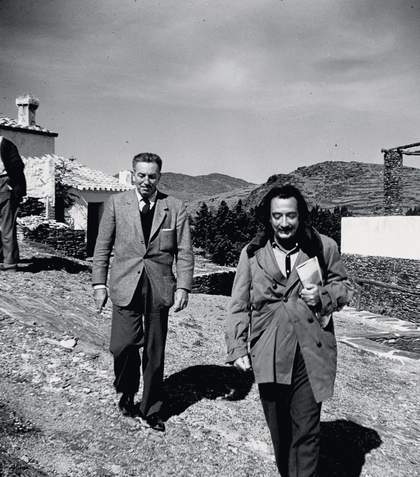I grew up in Pennsylvania, where I came across Salvador Dalí in magazines and coffee table books. My parents bought me some of these when I showed an interest in his work, which became part of my personal understanding of art. When I was a teenager, I found out that Dalí was staying at the Saint Regis Hotel in New York. I contacted him to see if I could meet him, and he told me to come over. When I arrived, he greeted me and invited me to see an exhibition of his work at the Knoedler Gallery, where he posed for some photographs. I remember that he was very patient while I was juggling my camera around. He was very generous to give his time to a young artist like myself. Meeting Dalí had a big impact on me. That evening, on the way back home, I thought to myself: ‘I could do this.’ Art could be a way of life.
I have always enjoyed the sense of craft that goes into Dalí’s work. When you first come across it, his level of skill dazzles you. The surfaces of his paintings and sculptures are very beautiful. He takes a traditional realism and then abstracts it with strong visual phenomena, for example in The Bust of a Retrospective Woman 1933. I love that piece. I’m sure it influenced my own porcelain sculptures. Or look at his paintings of bread. Who paints bread better than Dalí?
What I think is important about him is how he moved from a subjective realm into mass iconography – a higher calling. Dalí was in tune with mass consciousness. A good example of this is Portrait of My Dead Brother 1963, which is a pre-Pop painting. It’s like a Warhol silkscreen ahead of its time. I believe this style had a huge influence on many artists. For example, right now computer graphics seem to be based on his vision – with image gradation, geometric pixilation and morphing. The world today is viewed through Dalí’s vision.



